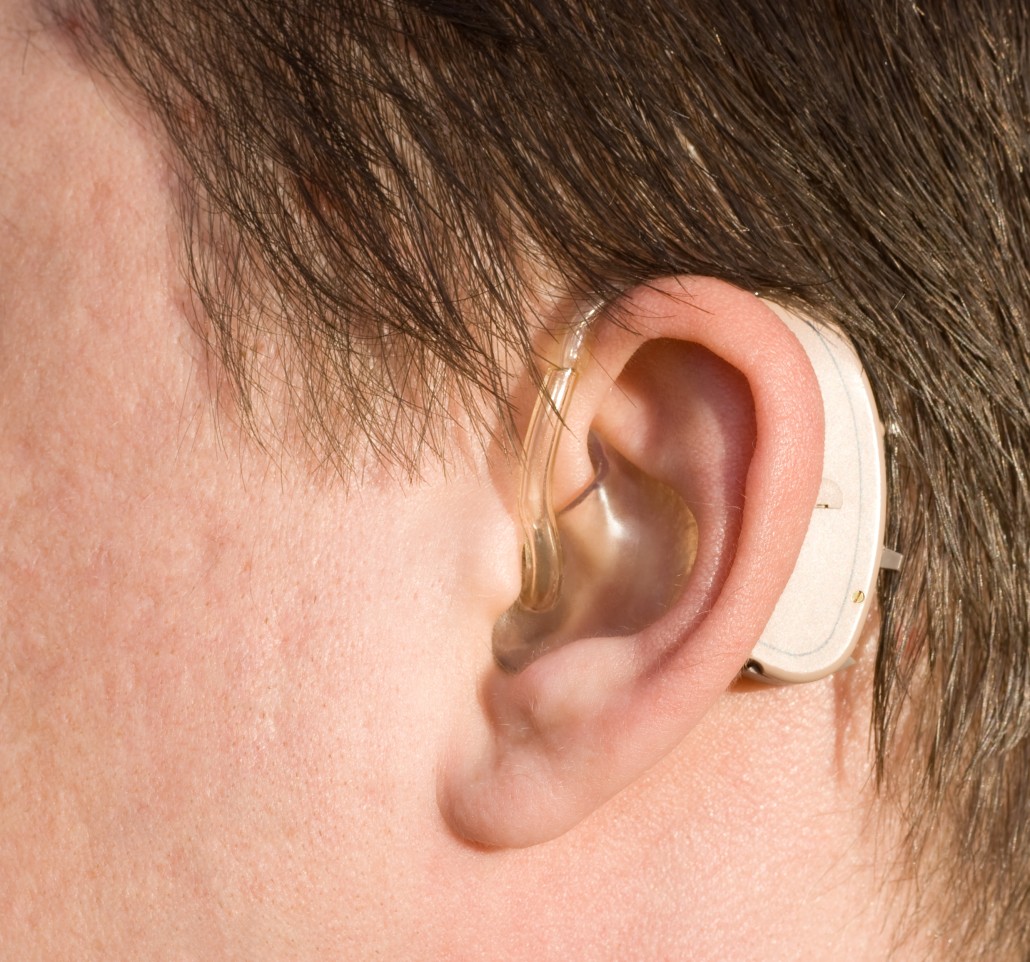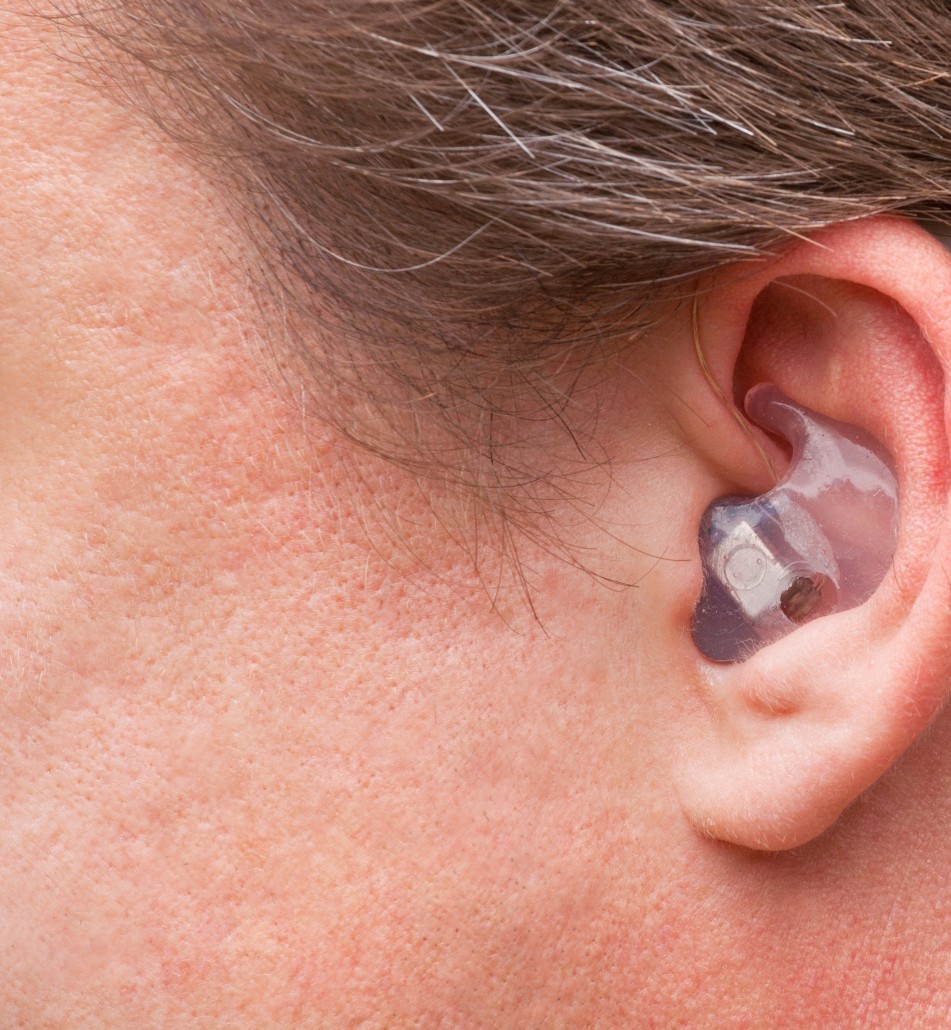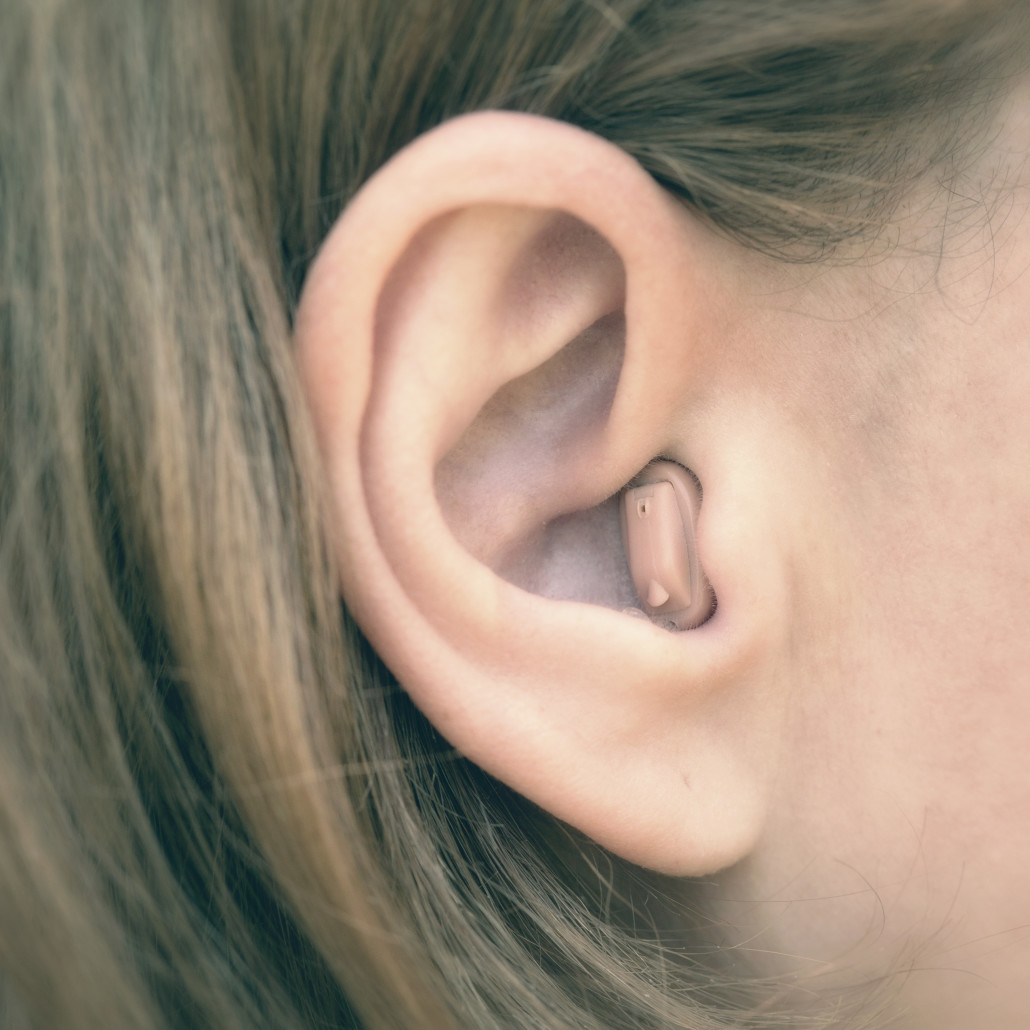Hearing aids are a common non-invasive treatment option for hearing loss.
A hearing aid is a small electronic device that is worn in or behind your ear and amplifies sounds so they can be heard better and listening and communicating with others is made simpler. The device consists of a microphone, amplifier and speaker. The sounds are received through the microphone and then increased in power by the amplifier, which then sends the signals to the ear through a speaker.
Hearing aids magnify sounds based on the severity of a patient’s hearing loss. Hair cells within the ear detect these magnified sounds and convert them into signals to pass to the brain. There is a limit on how much amplification can be given to sounds, so hearing aids are not for everyone.
There are 3 basic hearing aids that vary in size, placement and degree of amplification.
Determining which is best for you depends on the severity of your hearing loss.
Behind the ear (BTE)
These hearing aids are worn behind the ear and connected to a plastic mold that is placed inside the outer ear and are used by people with mild to profound hearing loss. New technology has introduced a smaller BTE aid that only places a small tube into the ear canal, keeping the canal open and keeping the device from being damaged by wax buildup. It also provides a clearer sound.
In the ear (ITE)
These hearing aids are smaller devices that fit inside the outer ear. They can be used for mild to severe hearing loss but are not typically used for children because the device will be too small as ears grow.
Canal
Canal aids are the smallest type of aid and fit either in the canal (ITC) or completely in the canal (CIC). Since they are so small, they may be hard to adjust and do not have extra space for batteries and other devices. Therefore, canal aids are recommended for people with mild to moderate hearing loss.
Aside from the different hearing aids, they also work in different ways depending on how they are programmed electronically.
- Analog – These aids convert the sound waves into electrical signals which are then amplified and transmitted back to the ear. They can be custom made to fit each patient’s hearing needs. They can also be customized for different listening environments and can be changed by the patient. Analog aids can be used in any of hearing aid.
- Digital – Digital hearing aids have similar features to analog aids, except they convert the sound waves into numerical codes and then amplify them. Some frequencies can be amplified more than others. Digital aids can also be programmed to focus on sounds coming from a certain direction. These aids tend to be more expensive than analog.
You can talk with your doctor to decide which type of hearing aid is best for you.
Most manufacturers allow for a 30-60 day trial period to make sure that your hearing can benefit from a hearing aid. They can be a costly investment, but many people are willing to pay the price to relieve hearing loss and be able to communicate with others.





